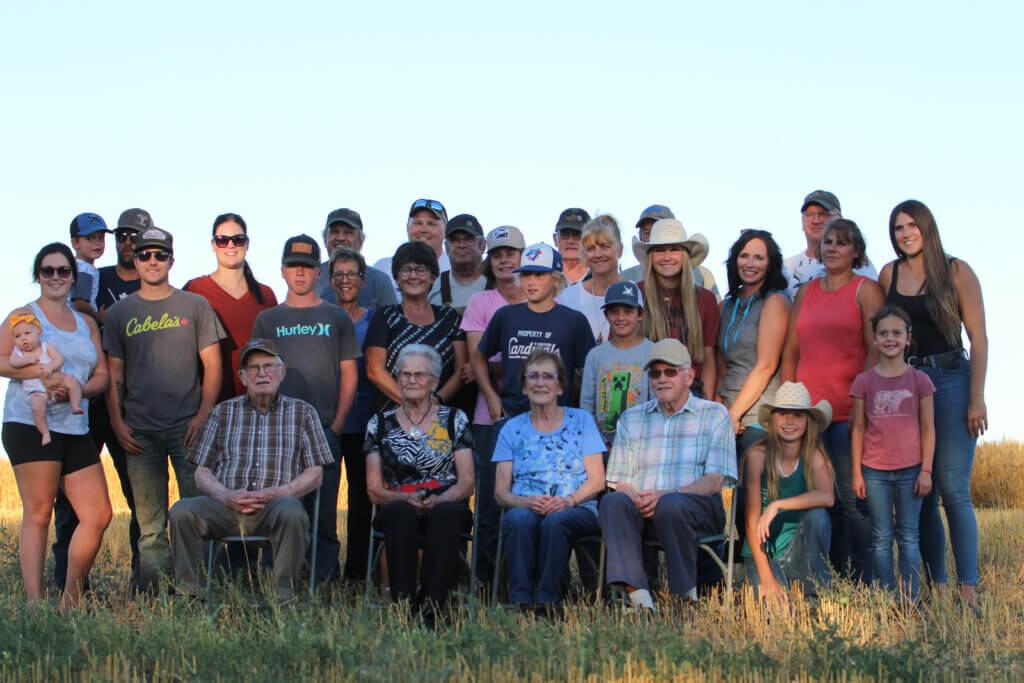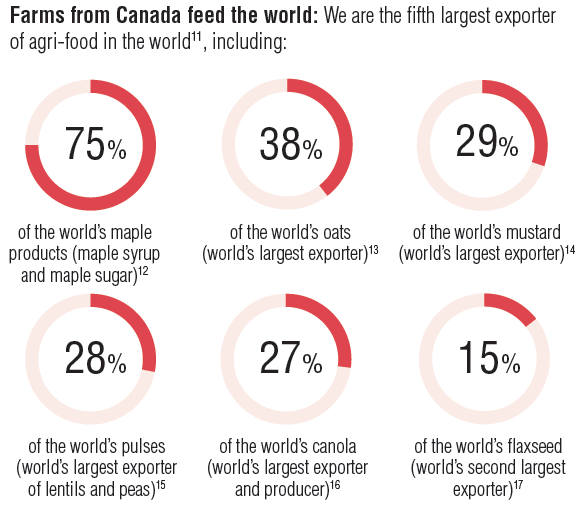Canadian Farms & Farmers
Canadian Farms And Farmers - Who Is Growing Our Food
Food and farming are a big deal in Canada.
To put it simply, farms give us food, fuel, fibre, flowers, and jobs. Canadians depend on farmers to produce the food we eat, and the agriculture and agri-food industry provide jobs for more than 2.1 million people One in nine Canadian jobs is directly linked to the sector, which contributed $134.9 billion to our national economy in 2021. This makes agriculture an important part of Canada’s economic engine. What farming looks like and what it means, though, depends on where in Canada you live. Farmers from coast to coast to coast raise various species of livestock and poultry, and grow many different crops – all depending on the climate and the soils in their regions. A small piece of very fertile land in a region with a mild climate can profitably grow unique specialty vegetables, for example. However, a large 5,000 acre farm in a more northerly region with lower quality soil may be better suited for grazing animals. That diversity means that Canadian farms come in all types and sizes, from small orchards and vineyards to large grain farms and cattle ranches, but all produce food, fuel, fibre, flowers, and more. Most farmers today are specialists in a specific type of farming, such as greenhouse vegetables, mushrooms, dairy, or egg production.

At a glance:
Farms are family: 97 per cent of Canada’s farms are family owned and run. Farms are bigger than in the past: The average farm size has doubled in the last 50 years, as technology makes it easier for farmers to manage bigger farms . In 2021, the average Canadian farm was 809 acres. How big is an acre? 150 cars parked in a square, 16 tennis courts , or 1,032 king size beds. Farms are disappearing at a slower rate than before: In the most recent census, the number of farms in Canada declined by only 1.9 per cent to 189,8747 , as compared to 193,492 farms in 2016. That’s the smallest drop in 25 years. Farms are diverse10: Ontario has the most farms, but Saskatchewan’s are the biggest, and British Columbia has the largest number of small farms (those producing less than $10,000 in gross annual income each). Canadian farms raise everything from cattle, poultry, and water buffalo, to grains, pulses, fruits, vegetables, nuts, herbs, flowers, and more.

We are the fifth largest exporter of agri-food in the world, including:
- 75% of the world’s maple products (maple syrup and maple sugar)
- 38% of the world’s oats (world’s largest exporter)
- 29% of the world’s mustard (world’s largest exporter)
- 28% of the world’s pulses (world’s largest exporter of lentils and peas)
- 27% of the world’s canola (world’s largest exporter and producer)
- 15% of the world’s flaxseed (world’s second largest exporter)


